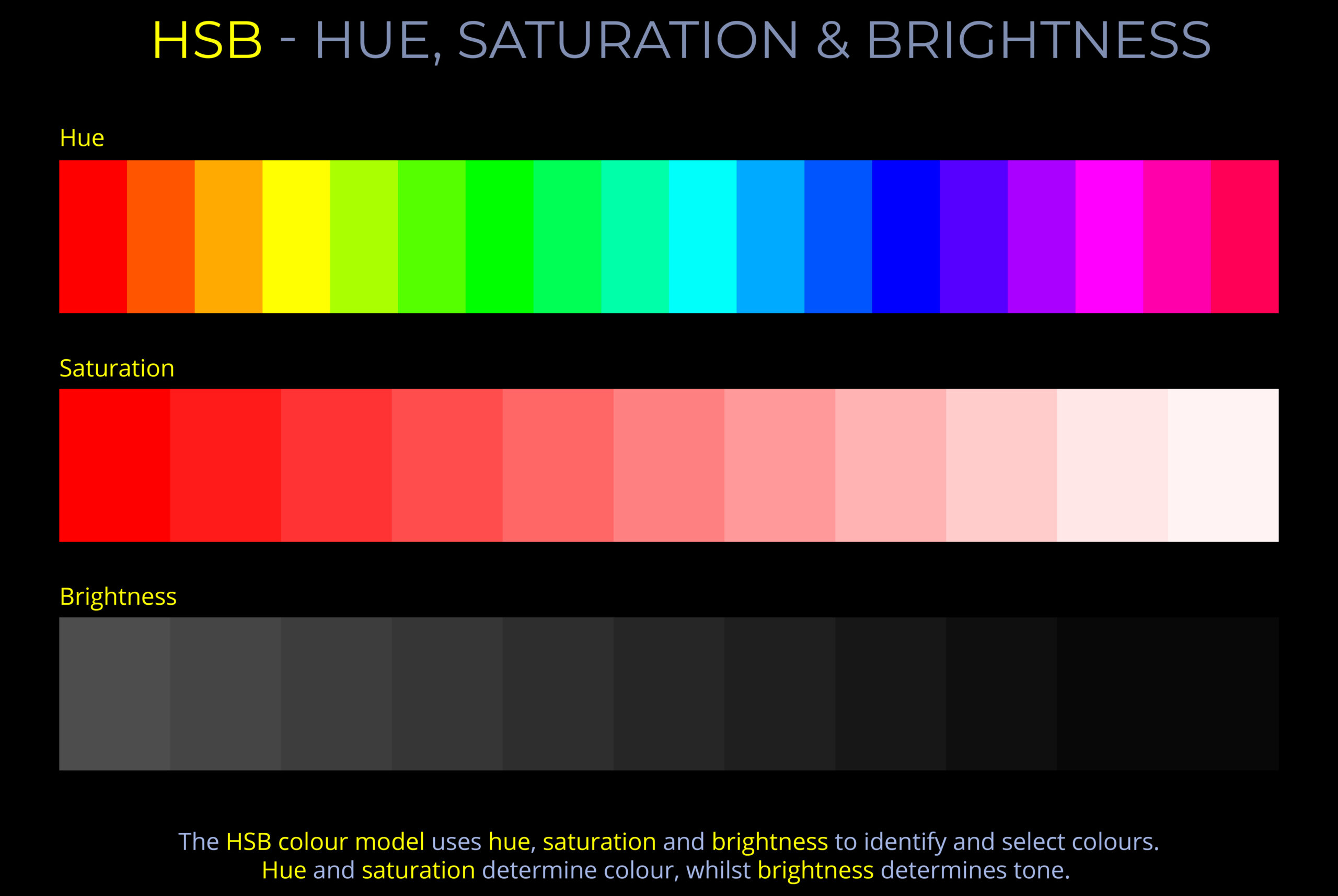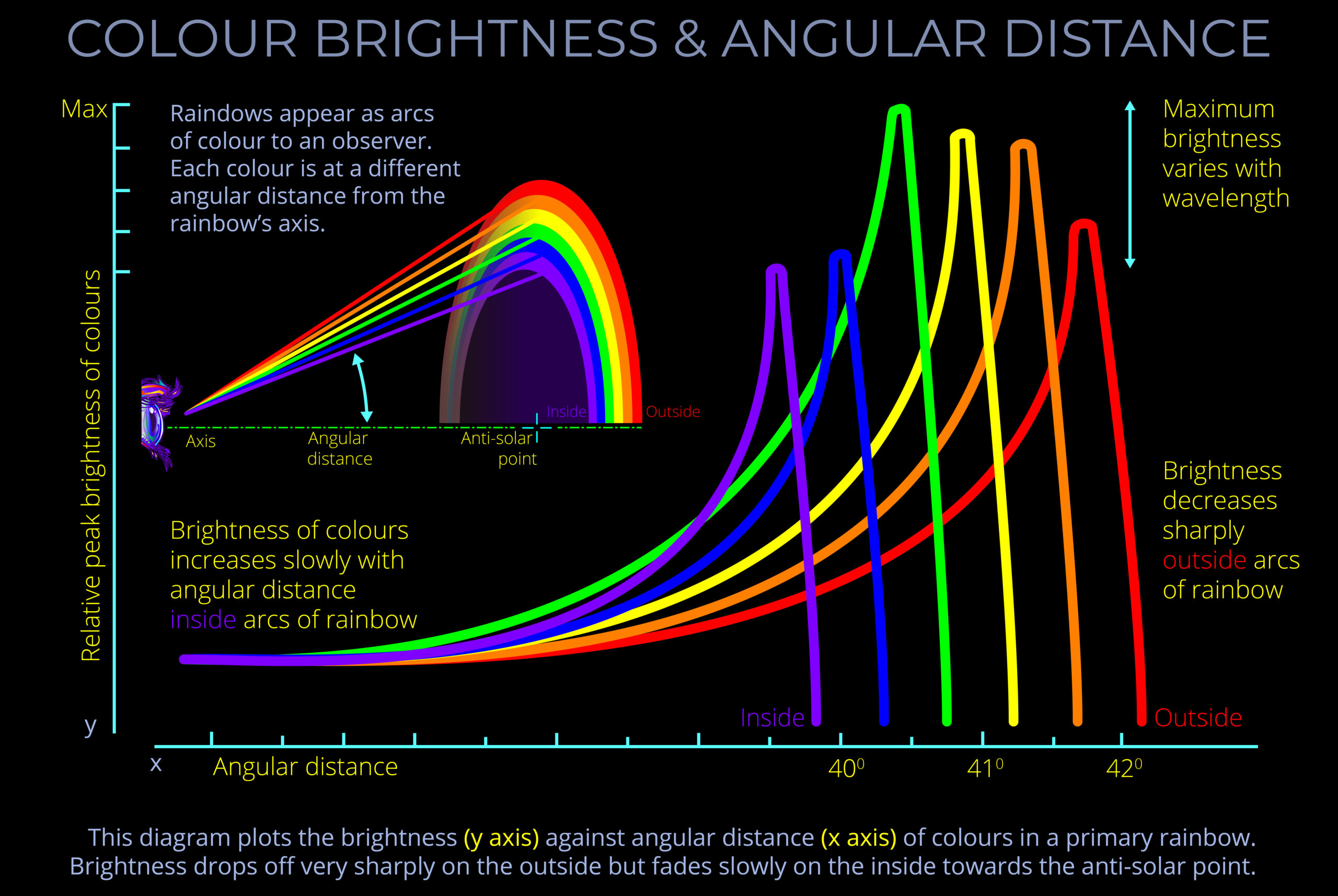Colour brightness refers to how a colour appears to a human observer in terms of the lightness or darkness of its hue.
- Colour is what humans see in the presence of radiated or reflected light.
- The brightness of the colour of an object or surface (its colour brightness) depends on the intensity of the incident light, as well as the wavelengths of light the object absorbs and reflects.
- The colour brightness of a transparent or translucent medium may depend on the intensity of the incident light, the wavelengths of light it absorbs and transmits and the amount it reflects.
- Colour brightness can differ depending on the difference between the way a colour appears to an observer in well-lit conditions compared with its subdued appearance when in shadow or when poorly illuminated.
- The perception of colour brightness can be influenced by hue, as some hues, such as fully saturated yellow, can appear brighter to human observers than others, like fully saturated red or blue.
- Optical factors affecting colour brightness include:
- The angle at which incidence light approaches a medium, object or surface.
- The composition of incident light in terms of wavelength, frequency and intensity.
- The polarization of incident light.
- Material properties affecting the colour brightness of a medium, object or surface include:
- Chemical composition
- Three-dimensional form
- Physical structure, including three-dimensional form and texture.
- Reflectivity
- Perceptual factors affecting colour brightness include:
- The influence of adjacent colours, which can alter the perceived hue and brightness of a target colour.
- Individual attributes of visual perception.
About brightness
- In this resource, the term brightness is associated with the intensity of light an object such as the Sun or a lightbulb emits.
- In everyday experience, we often gauge the brightness of a light source subjectively, by comparing it with the brightness of other known light sources.
- The brightness of a light can also be measured objectively using units like lumens or candela.
- Light travelling through a vacuum is not visible until it interacts with something such as our eyes or an object that reflects the light towards us, enabling us to perceive its brightness.
- The perceived brightness of a light source depends on the intensity and wavelength of the light and how the photoreceptive rod and cone cells in the human retina respond.
- Brightness, when used in this way, is the same as luminance.
- Luminance is a measure of the amount of light emitted, transmitted, or reflected from a particular area in a specific direction. It is used to quantify the intensity of light that is perceived by the human eye from a particular direction.
- Our eye’s photoreceptors, especially the rod cells which are more sensitive to light intensity, play a crucial role in our perception of brightness. Rods are more abundant and distributed throughout the retina, and they function mainly in low light conditions to help us perceive the brightness or lightness of an object, but they can’t distinguish colour.
- On the other hand, our perception of colour is based on how different wavelengths of light stimulate the three types of cone cells in our eyes. These cone cells are sensitive to short (S, which corresponds to blue), medium (M, corresponds to green), and long (L, corresponds to red) wavelengths of light. The combination of signals from these three types of cone cells allows us to perceive a broad spectrum of colours. Colour perception depends not just on the light’s intensity, but on its spectral composition – what mix of wavelengths it contains.
No posts found.
- Colour brightness refers to how a colour appears to a human observer in terms of the lightness or darkness of its hue.
- Colour is what humans see in the presence of radiated or reflected light.
- The brightness of the colour of an object or surface (its colour brightness) depends on the intensity of the incident light, as well as the wavelengths of light the object absorbs and reflects.
- The colour brightness of a transparent or translucent medium may depend on the intensity of the incident light, the wavelengths of light it absorbs and transmits and the amount it reflects.
- Colour brightness can differ depending on the difference between the way a colour appears to an observer in well-lit conditions compared with its subdued appearance when in shadow or when poorly illuminated.
- The perception of colour brightness can be influenced by hue, as some hues, such as fully saturated yellow, can appear brighter to human observers than others, like fully saturated red or blue.


